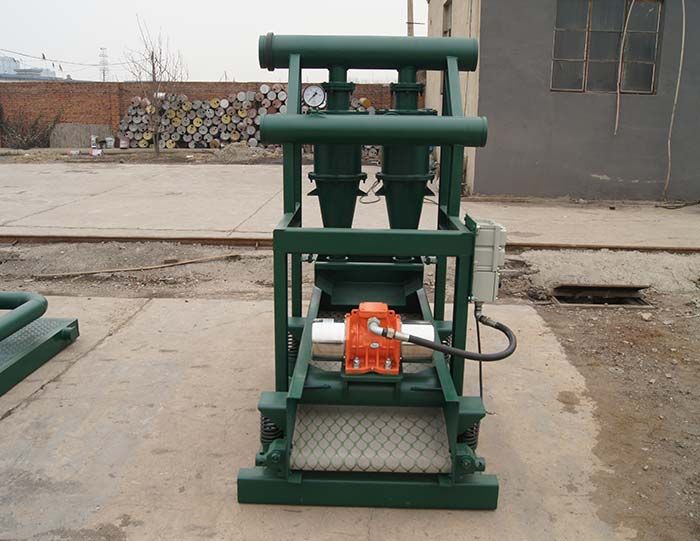Dessander and desilter are equipment on solids control system for separate solids from unweight mud or water-based mud (see Solids Control Equipment Requirement). Hydrocylone is core part of desander and desilter. The foremost different between desander and desilter is the size of hydrocyclone. So when you say hydrocyclone in mud management field is the same saying desander and desilter.

Hydrocyclone desander and desilter separate solids from fluid by using centrifugal force to cause solids to be settled from the fluid. There are no moving parts. Centrifugal force is created by the conversion of centrifugal pump head into a high velocity stream spiraling within the cone. Solids concentrate in proportion to their mass near the wall of the cone and are discharged at the bottom of the cone in the underflow. Clean fluid and fine solids are returned through the top of the cone in the overflow.
Hydrocyclone desilter and desander are simple mechanical devices, while not moving elements, designed to hurry up the sinking method of solids. drilling mud containing solids is fed into the body of the hydrocyclone, wherever the force iatrogenic by the flow causes heavier solids to break free the lighter solids. The heaviest solids ar discharged out all-time low (underflow) of the hydrocyclone and also the lightest solids exit the highest (overflow). The separation of solids relies upon feed particle size, fluid consistence, fluid feed pressure (as a operate of fluid density) and hydrocyclone size. Aipu Solids Control offers 3 (3) models of hydrocyclones:
Freature:
Hydrocyclone desander and desilter has no moving parts, it can be a very reliable piece of solids removal equipment when correctly operated and maintained.
The material of hydrocyclone is polyurethane, so it’s very lightweight and durable.
Victaulic clamp connect the inline and outline, easy to disassembly.
Skid-mounted installation with lifting eye welded to frame.
Customized cone configuration specific to customer needs.
 Linear Motion Shale Shaker In Drilling Rig
Linear Motion Shale Shaker In Drilling Rig  Oilfield Mud Cleaner
Oilfield Mud Cleaner  Drilling Fluid Decanter Centrifuge
Drilling Fluid Decanter Centrifuge  Drilling Mud Desander
Drilling Mud Desander  Hydrocyclone Desilter
Hydrocyclone Desilter  Centrifugal Pump/Centrifugal Mud Pump
Centrifugal Pump/Centrifugal Mud Pump  Shear Pump
Shear Pump  Jet Mud Mixer
Jet Mud Mixer  Horizontal Mud Agitator
Horizontal Mud Agitator  Constant Pressure Drilling Fluid Mud Gas Separator
Constant Pressure Drilling Fluid Mud Gas Separator  Mud Gun
Mud Gun  Mud Tank
Mud Tank  Solids Control System Vacuum Degasser
Solids Control System Vacuum Degasser  Flare Ignition Device
Flare Ignition Device  Diesel Tank
Diesel Tank  Submersible Slurry Pump
Submersible Slurry Pump 






































